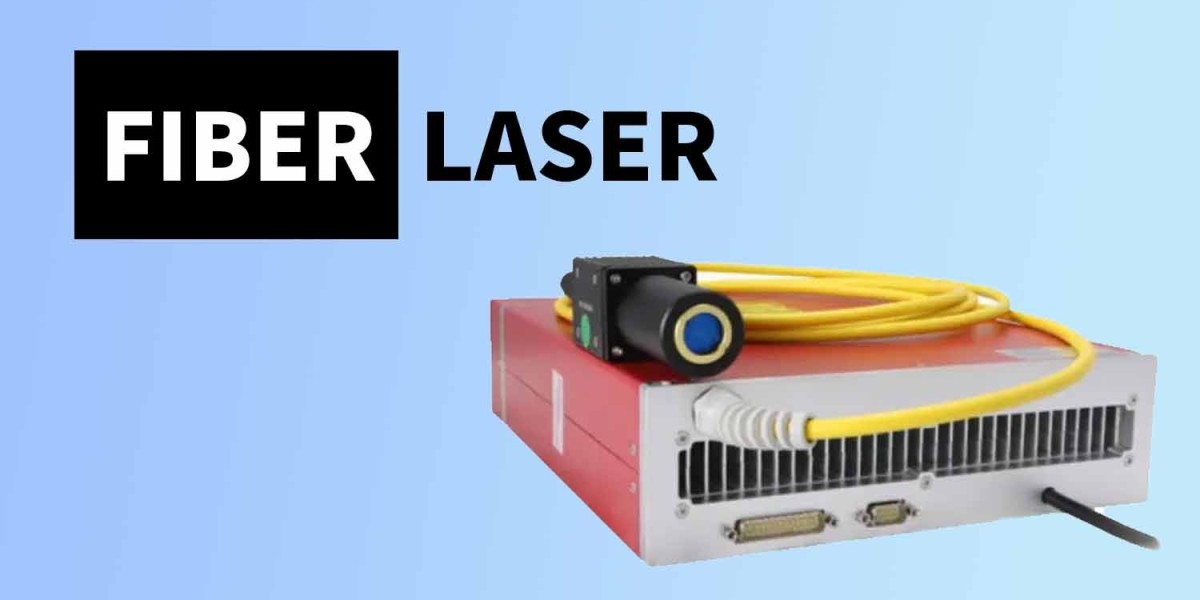In the realm of modern laser applications, fiber laser systems have become the go-to solution for high-performance, long-lasting, and maintenance-free laser processing. From industrial metal marking to intricate engraving on delicate surfaces, fiber laser sources are reshaping the boundaries of what laser systems can achieve.
What is a Fiber Laser?
A fiber laser is a type of solid-state laser that generates its laser beam through an optical fiber doped with rare-earth elements like ytterbium. Compared to traditional laser systems, fiber lasers offer superior beam quality, higher efficiency, and exceptional reliability.
These characteristics make fiber laser sources ideal for applications such as:
Deep metal engraving
High-speed barcoding
Precision serial marking
Surface texturing on stainless steel, titanium, aluminum, and more
Fiber Marking Laser: Accuracy Meets Speed
When it comes to marking, fiber marking laser systems are recognized for their pinpoint precision and fast throughput. Whether you’re working on industrial tools or electronic components, fiber marking laser machines provide permanent, high-contrast results that can withstand harsh environments.
Key advantages of fiber marking laser technology:
No consumables required
Long operational life (up to 100,000 hours)
Non-contact, damage-free processing
Capable of marking barcodes, QR codes, logos, and serial numbers
Thanks to these features, fiber laser marking has become the standard in automotive, aerospace, and medical device manufacturing.
Fiber Laser MOPA: Versatility Redefined
One of the most powerful variants of fiber lasers is the fiber laser MOPA (Master Oscillator Power Amplifier). This configuration allows independent control over pulse duration and frequency, making it ideal for marking sensitive materials and generating colorful markings on stainless steel and titanium.
What makes fiber laser MOPA stand out:
Adjustable pulse width for fine control
Ideal for black marking on anodized aluminum
Enables multicolor marking on metal surfaces
Better control for heat-sensitive applications
The fiber laser MOPA is often used in electronic component labeling, phone back panel engraving, and precision decorative marking where traditional lasers may fall short.
The Importance of High-Quality Fiber Laser Sources
At the heart of any fiber laser system lies the fiber laser source. This core component determines the power stability, beam consistency, and overall performance of the laser. Reputable fiber laser sources are engineered for high stability, compact design, and ease of integration into industrial systems.
Leading brands such as IPG, Raycus, and Max Photonics offer a variety of fiber laser sources ranging from low-power units for marking to high-power models for welding and cutting.
Choosing the right fiber laser source ensures:
Consistent marking depth and clarity
Stable operation in high-volume production lines
Lower maintenance and energy consumption
Conclusion: Why Fiber Lasers Dominate Modern Laser Processing
Whether you're looking for an advanced fiber marking laser, a versatile fiber laser MOPA, or a powerful fiber laser source, fiber laser technology offers unmatched performance, efficiency, and versatility.
As industries push toward smarter, cleaner, and more efficient production systems, investing in fiber laser solutions is not just a technological upgrade — it’s a strategic advantage.






